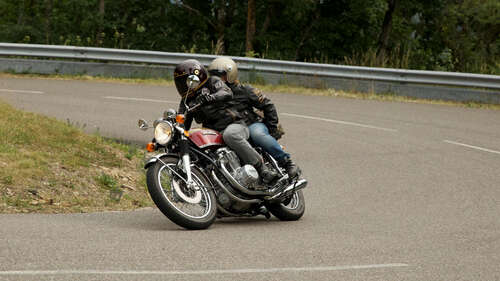
By 1966, Honda had five World GP titles under its belt and decided to put racing on hiatus and turn its attention to its line of consumer motorcycles. As it does with its race replica “RR” models of today, it wanted to transfer the high-performance technology it developed at the racetrack to its roadgoing bikes. At this time, Honda U.S.A. demanded a more impressive product line to boost floundering sales figures. As these two worlds collided, the result was formidable and unprecedented.
Often called the world’s first superbike, the Honda CB750 had four cylinders, four carburetors, four mufflers, and a 736.5cc engine capacity, producing 67 horsepower. While this may sound pedestrian by today’s standards, this was a remarkable achievement at the end of the Swinging Sixties. It had an electric starter, which was revelatory at the time, and disc brakes providing much-needed stopping power. Previously, Honda’s consumer bikes had been smaller capacity, practical vehicles that catered to the modern commuter (its little Super Cub was already wildly successful). With the CB750, it adopted a “go big or go home” mentality, defying its competitors and raising the bar for high-performance consumer machines worldwide.
The original 1969 “Sandcast” CB750 (with sand-molded crankcases) is considered one of the most influential motorcycles in history, and these can cost as much as $30,000 in good condition. However, you can find much cheaper models from the mid-1970s with die-cast crankcases. These can be found for less than $9,000, but they rocket in value when in excellent shape, which is understandable, considering this motorcycle’s remarkable heritage and desirability.

